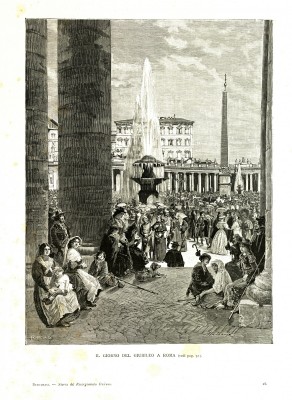Visita la galleria
For centuries, pilgrims and travellers to Rome had to choose one of the many roads converging on Rome across the Italian peninsula and, either on foot or using whatever means of transport their economic situation or the times allowed.The most frequently-travelled routes followed the ancient Roman consular roads: Via Regia Romana, Via Francigena, Via Flaminia from the North, or Via Appia from the South. Once they arrived, pilgrims entered Rome through one of the gates in the city walls: either ancient Roman gates that had been modified, or one of the gates built more recently to make it easier to get into and out of the city. Only a small proportion of travellers arrived at the port of Civitavecchia or directly at Rome’s Ripa Grande river port.The advent of railways, automobiles and air transport deeply affected the way pilgrims used to travel. The first pilgrims that flew to Rome (by an airplane or a seaplane) for a Holy Year landed in 1925. Over the years several initiatives were proposed and carried out to improve the quality of the journey as well as the pilgrims’ safety: rough and bumpy roads were repaired, more accommodation facilities were built, tolls and taxes were reduced, safe-conduct passes were issued, controls on crime were strengthened.Because of the dangers and the difficulties of the travel, a lot of pilgrims preferred to travel in groups linked to the network of confraternities, especially from the XVI century.
